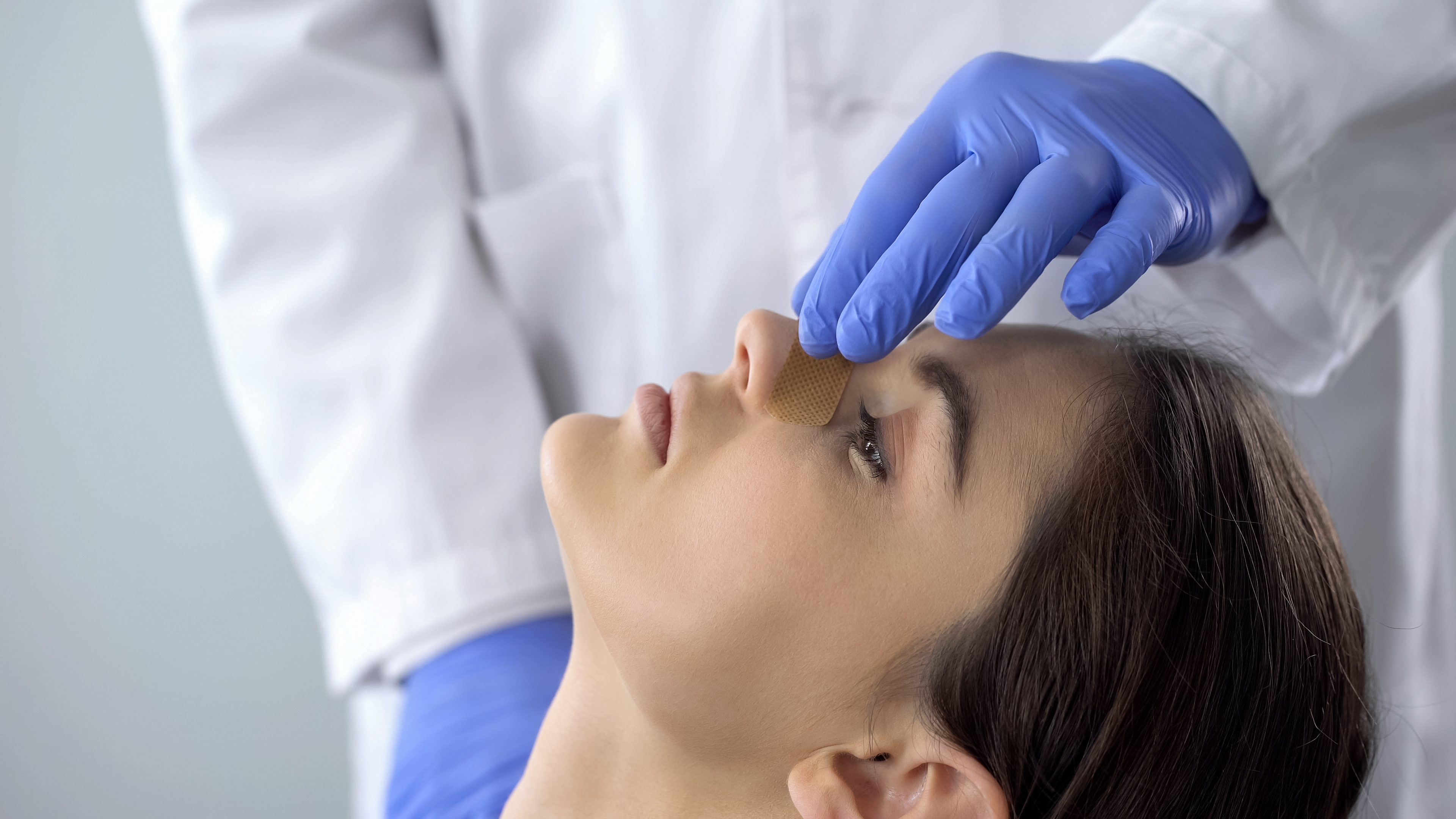
Rhinoplasty, sometimes referred to as a “nose job” or “nose reshaping,” is one of the most common types of plastic surgery. As common as it’s considered to be, however, it’s a highly individualized procedure. Plastic Surgeon Daniel Schmid, MD provides insight into rhinoplasty and how small changes can make a big difference.
Why rhinoplasty?
Rhinoplasty involves changes to the nose’s bone, cartilage, and/or skin to improve shape and proportion. The procedure can address concerns including:
- Nose asymmetry
- A nose profile with visible humps or indentions
- Nose size in relation to facial balance
- Width at the bridge of the nose
- Size and position of the nostrils
- Size and angle of the nose’s tip
Reasons for cosmetic improvements include correcting a deformity due to injury or a birth defect, as well. And in some cases, rhinoplasty addresses a functional need to improve breathing problems.
Preparing for rhinoplasty
Before scheduling a procedure, a patient and surgeon will meet for a consultation. This meeting is an important step in determining what a patient’s goals are and whether surgery is right for them.
During a consultation the surgeon will review the patient’s medical history and evaluate any pre-existing health conditions or risk factors. A physical exam helps the surgeon note facial and nose features, such as skin and cartilage, and photographs may be taken for reference and to discuss possible results.
Dr. Schmid says imaging software brings photographs to life and facilitates productive discussions around patient goals and treatment options. By manipulating images to present what changes will look like, he says, “Patients are able to see possibilities for themselves, as well as what the surgeon sees for them.”
In some cases, the surgeon may recommend a chin implant in lieu of or in addition to rhinoplasty. Dr. Schmid says chin enhancement may help with proportion more than a patient realizes. “Patients may be focused on their nose when minimal chin projection also is in play. Combining the two procedures can be powerful.”
How does a rhinoplasty procedure work?
Rhinoplasty generally is performed in an outpatient surgery center. The procedure requires local anesthesia with sedation or general anesthesia, depending on the surgery’s complexity. Most procedures take one to two hours.
There are two types of procedures—closed and open rhinoplasty. In the closed procedure, incisions are made inside the nose. In an open procedure, an external incision is made across the columella, the narrow strip of tissue that separates the nostrils.
Through these incisions, the surgeon lifts the skin that covers the nasal bones and cartilage and reshapes the nose structure. Depending on the patient’s needs for reshaping, bone and cartilage may be sculpted, or cartilage grafts may be added.
To improve some breathing problems, a surgeon can perform a septoplasty procedure during rhinoplasty. Septoplasty corrects a deviated septum, which occurs when the thin wall separating the nasal passages is off-center, making one nasal passage smaller. Patients with more complex breathing problems may be referred to an ear, nose, and throat specialist.
Once reshaping is complete, the surgeon puts nasal skin and tissue back in place and closes the incisions with stitches. Patients will spend time in a recovery room following the procedure for monitoring, and a friend or family member will need to drive them home.
Recovery from rhinoplasty
Most patients experience only mild discomfort during rhinoplasty recovery, which can be managed with oral over-the-counter or prescription medications. External and internal splints and bandages may be used to support the nose while it heals, and these are usually in place for about a week.
Mild bleeding from the nose in the week following surgery is normal, and sleeping on one’s back with the head elevated for several nights can help with bleeding and swelling. Patients usually can return to normal activities in about 10 days, although certain activities are discouraged for several weeks, such as sniffing forcefully, strenuous exercise, and resting eyeglasses on the nose.
Bruising can occur for about a week, and swelling will take several months to subside. “It’s understandable a patient will be anxious to see an outcome right away, but it will take time,” Dr. Schmid says.
A follow-up visit is necessary a week after surgery, and periodic visits may be scheduled for up to a year to ensure proper healing.
What makes someone a good rhinoplasty candidate?
Ideal rhinoplasty candidates are in good physical health and have realistic expectations. They want the procedure for themselves and not for someone else.
When considering a surgeon, Dr. Schmid recommends asking about training and experience and says a surgeon should be board-certified by the American Board of Plastic Surgery. “Ask to see before-and-after photos of their work,” he says, and because male and female facial structures differ, it’s good to find out whether a surgeon has experience performing rhinoplasty on both sexes.
Whether for cosmetic or functional reasons, every rhinoplasty procedure is unique and requires exceptional skill. For a surgeon who tailors any procedure to best meet a patient’s needs, the optimal outcome is a natural-looking nose and enhanced facial harmony.
